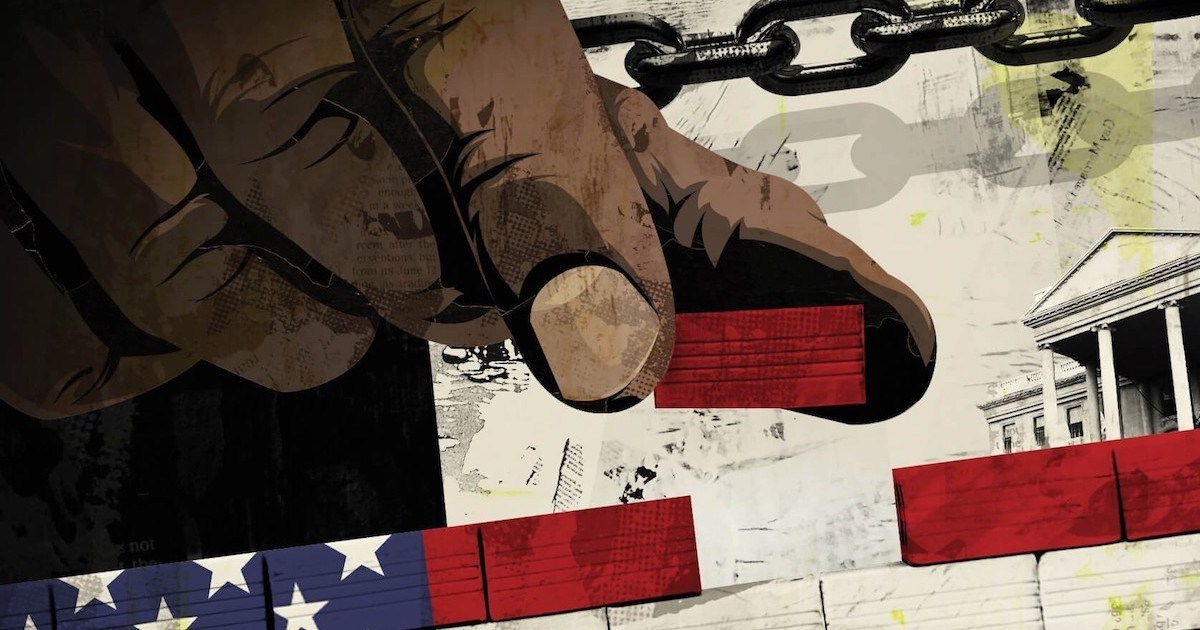[ad_1]
Schools are not adequately teaching the history of American slavery, educators are not sufficiently prepared to teach it, textbooks do not have enough material about it, and – as a result – students lack a basic knowledge of the important role it played in shaping the United States and the impact it continues to have on race relations in America.
Part I: How Slavery is Taught Today
A fifth-grader is “sold” at a mock slave auction in a New Jersey school. On a day when Georgia students are encouraged to dress in Civil War-era costumes, a white student dressed as a plantation owner tells a 10-year-old black student, “You are my slave.” A California teacher stages a classroom simulation of conditions on a slaver’s ship to provide a “unique learning experience.” A fourth-grader checks with his mother when his English homework asks him to “give three ‘good’ reasons for slavery.” Scholastic, the largest publisher of children’s books, recalls a picture book because of its portrayal of enslaved people as happy and eager to please their enslavers. A popular textbook refers to forcibly imported Africans as “workers.” Secretary of Housing and Urban Development Ben Carson refers to the abducted and enslaved as “immigrants.” Meanwhile, Georgetown University reveals that it achieved early financial security through the sale of nearly 300 enslaved people and promises preferential admission to their descendants, and Yale University renames a residential college previously named after a notorious enslaver.
Slavery isn’t in the past. It’s in the headlines.
These recent events reveal, at least in part, how American schools are failing to teach a critical and essential portion of the nation’s legacy—the history and continuing impact of chattel slavery. Research for this report reveals that high school students don’t know much about the history of slavery in the United States, with only 8 percent able to identify it as the central cause of the Civil War. This should not be surprising, given that most adults wrongly identify “states’ rights” as the cause. Widespread ignorance about slavery, the antebellum South and the Confederacy persists to the present day, and is on display in controversies over monument removal in places like New Orleans, Louisiana, and Charlottesville, Virginia, where protests turned deadly in the summer of 2017. Students and adults alike may even hold fringe beliefs, including notions propagated by white nationalists, such as the idea that slavery wasn’t “so bad,” or that the Irish were enslaved. Few Americans acknowledge the role slavery played in states outside the South.
Teachers struggle to do justice to the nation’s legacy of racial injustice. They are poorly served by state standards and frameworks, popular textbooks and even their own academic preparation. For this report, we surveyed more than 1,700 social studies teachers across the country. A bare majority say they feel competent to teach about slavery. Most say that the available resources and preparation programs have failed them. Almost all regret this deficiency, recognizing that teaching the history of slavery is essential. When we reviewed a set of popular history textbooks, we saw why teachers felt a lack of support: Texts fail in key areas, including connecting slavery to the present and portraying the diversity of the experiences of the enslaved. State content standards, which are meant to set clear expectations for instruction, are scattershot at best, often making puzzling choices such as teaching about Harriet Tubman long before slavery, or equivocating on the cause of the Civil War. When we consider the available landscape of materials and expectations, it is no wonder that teachers struggle.
[ad_2]
Source link

